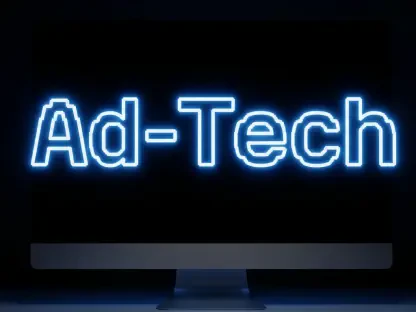In a world where digital content reigns supreme, a staggering statistic emerges that underscores the rapid shift in online landscapes: over 60% of online material in 2025 is estimated to be machine-generated, according to recent industry reports. Amid this tidal wave of automation, a tech titan has unleashed a tool that promises to redefine content creation—yet it’s sparking outrage instead of applause. Enter Google’s Opal AI, a cutting-edge platform designed to churn out blogs, ads, and social media posts at an unprecedented scale. But as marketers rush to embrace this innovation, a storm brews over whether it undermines the very principles of quality and authenticity that the internet holds dear. What happens when the gatekeeper of search integrity appears to play by different rules?
Why Opal AI Is Fueling Fierce Debate
At the heart of this uproar lies a glaring contradiction that has the digital world buzzing. Google, long a champion of high-quality, user-focused content, has introduced Opal AI as a solution for creators to produce vast amounts of material with minimal effort. This tool, capable of crafting tailored marketing assets from a single concept, is marketed as a game-changer for efficiency. However, its launch has collided head-on with Google’s own strict policies against scaled content abuse, which flag mass-produced, low-value output as a threat to search integrity. This clash raises eyebrows and questions about consistency in an era where trust in tech giants is already fragile.
The stakes couldn’t be higher as the internet grapples with an influx of what critics call “AI slop”—subpar, machine-generated content flooding the web. With Opal’s potential to amplify this trend, the debate transcends mere policy. It’s about the soul of online information and whether tools like this will elevate creativity or drown it in a sea of spam. For every marketer celebrating the ease of content generation, there’s a skeptic warning of a digital landscape littered with meaningless noise, challenging Google to reconcile its dual roles as innovator and regulator.
The Wider Lens: Balancing AI Power with Web Standards
Zooming out, the controversy surrounding Opal reflects a broader tension in the tech ecosystem. AI-driven tools are transforming how content is made, offering unparalleled speed at a time when digital visibility is paramount for businesses. Studies from 2025 show that companies using AI content tools report a 40% boost in production rates, reshaping marketing strategies overnight. Yet, this efficiency comes with a catch: the risk of prioritizing quantity over quality, a concern Google itself has historically addressed through stringent guidelines against manipulative content practices.
This dilemma affects a wide range of stakeholders, from small business owners leveraging AI to compete with larger players, to SEO specialists navigating an ever-shifting rulebook. Google’s stance against scaled content that lacks user value—think endless, repetitive pages designed purely for rankings—has been clear for years. Opal’s arrival, however, muddies the waters, prompting urgent discussions on how innovation can align with the mission to preserve a web where information serves people, not algorithms. The balance remains elusive as the digital community watches closely.
Dissecting the Contradiction at Opal’s Core
Diving deeper into Opal’s framework reveals the crux of the discord. Billed as a revolutionary asset, this AI tool enables users to generate everything from blog drafts to video ad scripts with consistency and scale, streamlining workflows for creators. Google promotes it as a way to empower marketers, emphasizing customization and speed as key benefits. A single idea can blossom into a full campaign, cutting down hours of manual labor—a feature that, on paper, seems like a dream for content teams.
Yet, this promise slams against a wall of policy. Google’s scaled content abuse guidelines explicitly caution against mass production, particularly through AI, if the output lacks meaningful value for users. The risk of misuse looms large—could Opal become a conduit for spam if wielded without care? While exceptions exist, such as Google’s reported approval of Reddit’s AI-driven translations due to their clear user intent, the broader application for everyday users remains unclear, leaving a gap between intent and enforcement that fuels frustration.
This paradox isn’t just theoretical; it’s a practical puzzle for those adopting the tool. If Opal’s capabilities are harnessed without oversight, the potential for generating low-value content at scale could trigger penalties under Google’s own rules. The tightrope between leveraging AI’s power and adhering to search standards is razor-thin, placing Google in a tricky position as both creator and enforcer of digital norms. The question lingers: how will this balance be struck?
Echoes of Discontent from the SEO Frontlines
Turning to the voices in the trenches, the SEO community has not minced words about Opal’s implications. Industry professionals, from seasoned experts to emerging talents, express a shared sense of betrayal over what they perceive as double standards. A collective frustration reverberates through forums and social channels, with many arguing that Google’s endorsement of a mass-content tool flies in the face of its anti-spam rhetoric. The sentiment is palpable: rules seem to bend when it suits the rule-maker.
Concerns extend beyond hypocrisy to the tangible impact on the web’s health. With AI-generated content already contributing to a documented 25% rise in low-value pages since 2025, as per web analytics firms, fears of “AI slop” dominating search results are grounded in reality. Google’s response—that its algorithms are built to prioritize helpful content regardless of how it’s made—does little to quell doubts. Skepticism persists among SEOs who’ve seen penalties for practices now seemingly endorsed by Opal, painting a picture of fractured trust that may take time to mend.
Charting a Safe Course for Opal Users
For those eager to tap into Opal’s potential, navigating this contentious landscape demands strategy and restraint. A primary guideline is to ensure human oversight remains central—use the tool for ideation or rough drafts, but always refine outputs to inject originality and relevance. This approach mitigates the risk of producing generic content that could be flagged as spam, aligning with Google’s emphasis on user value over sheer volume.
Another key consideration is intent. Content should address genuine audience needs rather than chase search rankings, a principle that keeps creators within the bounds of acceptable practice. Scaling output must be done thoughtfully—mass production without purpose is a red flag in Google’s systems. By treating AI as an assistant rather than a replacement for human creativity, users can harness Opal’s strengths while sidestepping the pitfalls that have the digital community on high alert. These practical steps offer a roadmap through uncharted territory.
Reflecting on a Divisive Digital Chapter
Looking back, the rollout of Opal AI stirred a profound reckoning within the online sphere, exposing fault lines between innovation and responsibility. The clash between Google’s push for scalable content tools and its own protective policies revealed a deeper struggle to define the internet’s future. Marketers and creators wrestled with the allure of efficiency, while SEO voices sounded alarms over the potential degradation of web quality, leaving an indelible mark on the discourse.
As this chapter closed, the path forward demanded actionable clarity. Stakeholders were urged to advocate for transparent guidelines from tech leaders, ensuring tools like Opal enhance rather than erode digital value. Users, meanwhile, faced the task of wielding AI with purpose, prioritizing quality to uphold a web worth exploring. The lessons from this controversy echoed as a reminder: technology’s promise must be matched by accountability, a balance critical to safeguarding the digital frontier for years ahead.









